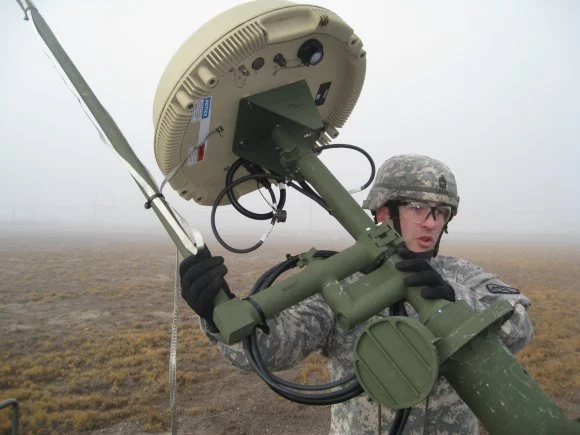The United States has provided Ukraine with advanced Ground-Launched Small Diameter Bombs (GLSDB), aiming to enhance Ukraine’s long-range strike capabilities. These bombs, developed by Boeing and Saab, boast a range of approximately 100 miles, facilitated by small wings that extend from the bomb’s body. Ukraine received these munitions in early February after persistent requests for weapons capable of striking strategic targets, including those in Crimea.
Initial reception of the GLSDB was positive, with military experts suggesting that their deployment could compel Russia to move its supplies further from the front lines. However, the effectiveness of these bombs has been significantly compromised by sophisticated Russian electronic jamming techniques. Despite Boeing’s claims that the GLSDB’s GPS navigation system is highly resistant to jamming, the bombs have struggled to maintain accuracy in the face of Russian countermeasures.
Sources familiar with the situation report that Russian jamming efforts have severely undermined the guidance systems of these bombs, resulting in many failing to hit their intended targets. Russian forces employ GPS spoofers, which transmit false location data to disrupt the trajectory of the munitions. This tactic exploits the relatively weak nature of GPS signals, allowing more powerful false signals to override accurate inputs. Advances in technology have made it possible to produce these GPS spoofers at low cost, utilizing a software-defined radio and open-source software.
Boeing has acknowledged the issue and is working closely with the Defense Department on spiral capability improvements to the GLSDB system. This iterative process of software development aims to enhance the weapon’s performance over time. William LaPlante, the US undersecretary of defense for acquisition and sustainment, highlighted the problem in a recent statement, indicating that a US-supplied precision weapon had encountered issues due to electronic warfare, likely referring to the GLSDB.
The GLSDB is not the only weapon affected by Russian electronic jamming. The Excalibur artillery projectile, an extended-range precision munition, has also faced significant challenges. The success rate of Excalibur shells dropped to less than 10 percent, prompting Washington to halt deliveries after Ukrainian authorities reported the issue. This decline in effectiveness is attributed to new Russian electronic warfare tactics.
Similarly, the High Mobility Artillery Rocket System (HIMARS) has seen reduced effectiveness due to Russian jamming. Initially successful in destroying Russian command stations and arms depots, HIMARS systems have been increasingly jammed, causing them to miss targets by 15 meters or more. Despite these challenges, Ukrainian forces continue to value HIMARS missiles. The US is providing additional equipment to ensure accurate targeting and counter Russian electronic warfare. However, the evolving electronic warfare tactics employed by Russia continue to pose a significant challenge.
Russia has been using GPS spoofing tactics in Ukraine since 2018. Creating effective spoofers has become increasingly accessible, requiring only a software-defined radio and open-source software. This capability has allowed Russian forces to disrupt the GPS signals of precision-guided munitions effectively.
Boeing and Saab marketed the GLSDB as having a “highly jamming-resistant GPS” in 2022. However, in Ukraine, these systems have proven vulnerable to advanced electronic countermeasures. Boeing’s iterative software improvements, known as spiral capability improvements, aim to address these vulnerabilities over time by continuously updating and refining the system.
William LaPlante’s acknowledgment highlights the broader implications for US-supplied weapons in the conflict. The effectiveness of precision-guided munitions like Excalibur artillery shells and HIMARS rockets is crucial for Ukraine’s strategic operations. The Excalibur shells’ success rate has dropped below 10 percent, leading to the suspension of their delivery.
The HIMARS system, initially a game-changer for Ukrainian forces, has also suffered due to electronic jamming. Russian jamming has significantly reduced their effectiveness, with missiles missing targets by a considerable margin. Despite this, Ukrainian forces continue to use HIMARS, employing various tactics to mitigate the impact of jamming. The US supports these efforts by providing additional equipment designed to counter electronic interference and ensure more accurate targeting.
In conclusion, the conflict in Ukraine has exposed vulnerabilities in advanced Western weaponry when faced with sophisticated Russian electronic warfare tactics. The ongoing challenge of electronic jamming underscores the need for continuous improvement and adaptation of military technology. The GLSDB, along with other precision-guided munitions like Excalibur and HIMARS, must evolve to maintain their effectiveness in an environment where electronic warfare is a critical factor. The US and its allies must remain vigilant and proactive in developing countermeasures to ensure the continued efficacy of their military support to Ukraine.
